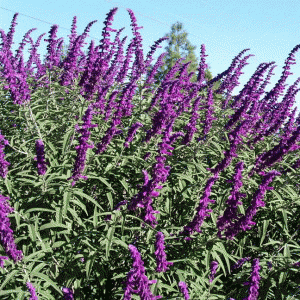CSUN-al Gardening to Explore What Makes an Audubon Habitat Garden
 (NORTHRIDGE, Calif., Aug. 12, 2013) – In this time of extended drought and watering restrictions, Southern California residents are searching for lawn alternatives that don’t sacrifice visual appeal.
(NORTHRIDGE, Calif., Aug. 12, 2013) – In this time of extended drought and watering restrictions, Southern California residents are searching for lawn alternatives that don’t sacrifice visual appeal.
Drought-tolerant plantings, especially those utilizing California natives or Mediterranean-climate species, can provide color, texture, and beauty while reducing water usage and benefiting the local fauna.
California State University, Northridge’s next CSUN-al Gardening Series class on Saturday, Sept. 7, at 9 a.m. will explore how, by converting a yard or lawn into an Audubon Habitat, a sanctuary for both wildlife and people, homeowners can reduce water, fertilizer, and maintenance needs, and at the same time create a welcoming setting for birds, butterflies, and humans.
Speaker Alan Pollack, Audubon-at-Home Chair for the San Fernando Valley Audubon Society, will share his love of wildlife and gardening. Pollack has successfully converted his own yard into a National Wildlife Federation-certified “Backyard Wildlife Habitat” site. He will answer questions about creating a garden that is attractive to wildlife, as well as humans, and conserves water.
“By using California natives and other drought-tolerant plants, homeowners can reduce not only water and fertilizer usage, but also maintenance time,” said Brenda Kanno, manager of CSUN’s Botanic Garden, which hosts the series. “Using these plants to convert a lawn into an Audubon Habitat will provide a beautiful, colorful setting for the family and local fauna to enjoy.”
Registration for the class is required. Email botanicgarden@csun.edu to request a space in the class or for more information. Driving and parking instructions, as well as the class meeting location, will be sent upon registration.
The Cal State Northridge Botanic Garden is operated by the university’s Department of Biology and serves as a field site for botany, entomology, photography, painting and other classes. In addition to outdoor landscapes and natural botanic environments, the garden also features greenhouses where noteworthy botanical specimens are grown. The garden is open to the community.
Visit the website www.csun.edu/botanicgarden for more information.

 experience
experience